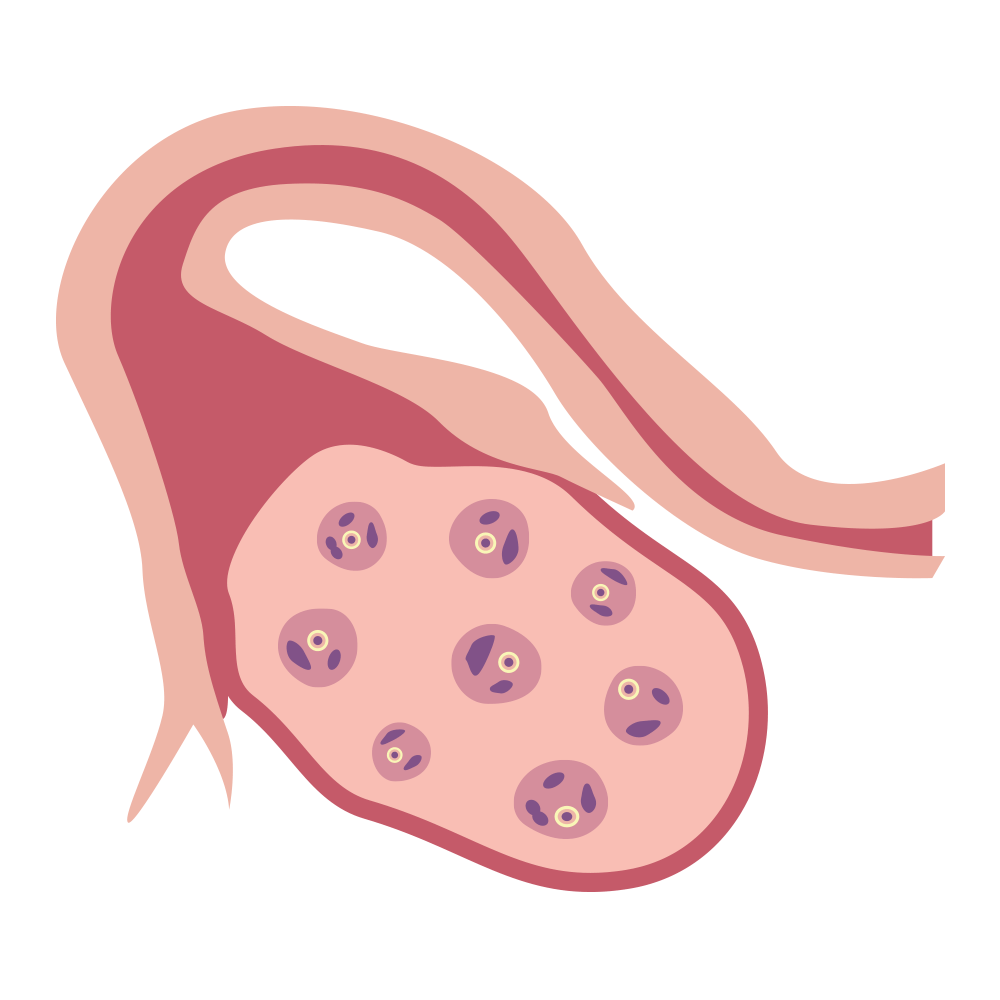
Eggs are a nonrenewable resource.
Women are born with ~1 million potential eggs (in the form of ovarian follicles), but that’s all the eggs we’ll ever have. Unlike skin cells or blood cells, which regenerate, our bodies aren’t able to make more egg cells. So our ovarian reserve is like a “bank” that doesn’t take deposits—and we’re withdrawing from it with each passing month. By puberty, a woman’s egg count might be 1 million; at 25, maybe 300,000. Then, around 35, the decline starts to get a bit steeper until all eggs have been depleted (menopause).
Source: Wallace W, Kelsey T. Human Ovarian Reserve from Conception to the Menopause. PLoS ONE 2010; 5(1).” under the text and image (screenshot attached)

Many people think a woman loses just one egg per month—but that’s not the case.
When we’re young, our ovaries are full of egg follicles, waiting to mature; we call this an egg’s “primordial” or “sleeping” state. During each menstrual cycle, a certain number of these follicles are activated to prepare for ovulation, but just one egg takes center stage to mature and be released from the ovary. The understudy follicles, on the other hand, are “reabsorbed” by the body (and effectively lost). Doctors estimate that while our bodies may naturally ovulate only 400 times in our lives, we lose upwards of 1,000 follicles—potential eggs—per month, and that loss accelerates as we get older.
During egg freezing, we use medication to prompt those otherwise lost eggs to mature, allowing your body to produce multiple eggs in one cycle. Egg freezing doesn’t lower your body’s natural egg count; it simply makes use of more of the eggs you already have.
Doctors have tests to measure egg count.
There are two good ways to measure egg count: an antral follicle count and an AMH (anti-Müllerian hormone) test. During an antral follicle count, a doctor uses ultrasound to count the visible follicles. Each follicle contains an immature egg that could potentially mature and ovulate. This test gives an idea of not only total egg count, but also of how many eggs a woman might be able to freeze during one cycle. This test is most meaningful at the beginning of a woman’s menstrual cycle.
AMH, on the other hand, is a protein hormone produced by special cells inside the follicles. The level of AMH in the blood can help doctors estimate the total number of follicles inside the ovaries, and therefore a woman’s total egg count. Because AMH levels stay basically stable throughout a cycle, the blood test can be performed at any time. A typical AMH level for a fertile woman is 1.0–4.0 ng/ml, but, depending on age, many women will be higher or lower than this range.


